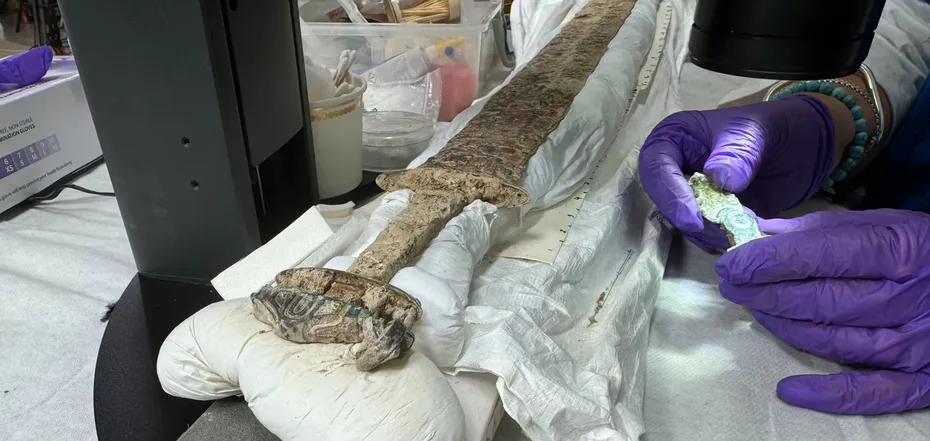
An elite sixth-century sword discovered at UK cemetary in perfect condition
A “really incredible” sixth-century sword has been found in Kent, southeastern England. The artifact was discovered at an Anglo-Saxon cemetery near Canterbury.
To the surprise of archaeologists, the elite weapon was unearthed in excellent condition. The discovery is compared to a sword found earlier in Sutton Hoo, an Anglo-Saxon burial site in Suffolk, The Guardian reports.
According to the researchers, the sword has a silver-gilded hilt with a decorative pattern of high craftsmanship, and the blade itself is decorated with a runic script. Even elements of its leather and wood scabbard and the beaver fur with which it was padded have been preserved.
Interestingly, the sword has a ring attached to it, which may symbolize an oath to a king or other high-ranking person, scientists suggest.
Experts emphasize that this artifact is one of the exceptional items found in an early medieval cemetery near Canterbury. Therefore, archaeologists plan to continue excavations at this site.
So far, 12 burials have been excavated here and, according to researchers, there are 200 more that will take years to study. According to historians, the findings date back to the fifth and sixth centuries.
“We’re keeping the name of the site under wraps. It’s a very rich cemetery. It would be a real tragedy if it became well known before we’ve excavated it,” said Duncan Sayer, a leading archaeologist and professor of archaeology at the University of Central Lancashire.
The scientist expressed his admiration for the found sword. “It’s really incredible, in the top echelons of swords, an elite object in every way, which is wonderful. It rivals the swords from Dover and from Sutton Hoo,” he said.
According to the researchers, a gold pendant depicting a snake or dragon was buried in the same grave. Since such pendants were worn by women of high status, it is believed that it was a valuable souvenir from a relative or ancestor, experts say.
The archaeologists add that all the men’s graves contain weapons such as spears and shields, and all the women’s graves contain knives, as well as brooches and buckles, among other items.
Conservationist Dana Goodburn-Brown used a microscope to examine the sword she found. Interestingly, she spotted fly pupae on it. This means that the body was not covered immediately before burial, possibly giving the family time to say goodbye. “So we’re learning something about the funerary practice,” the scientist emphasized.
According to experts, these excavations are part of a larger project. A study of 300 early Anglo-Saxons from the east coast of Britain showed that about 75% of the DNA came from continental Northern Europe. “A significant migration event after the Roman administration stopped in Britain,” the researchers noted.
The sword and other finds will undergo a long process of conservation, and then they will be sent to the Folkestone Museum.

Comments (0)